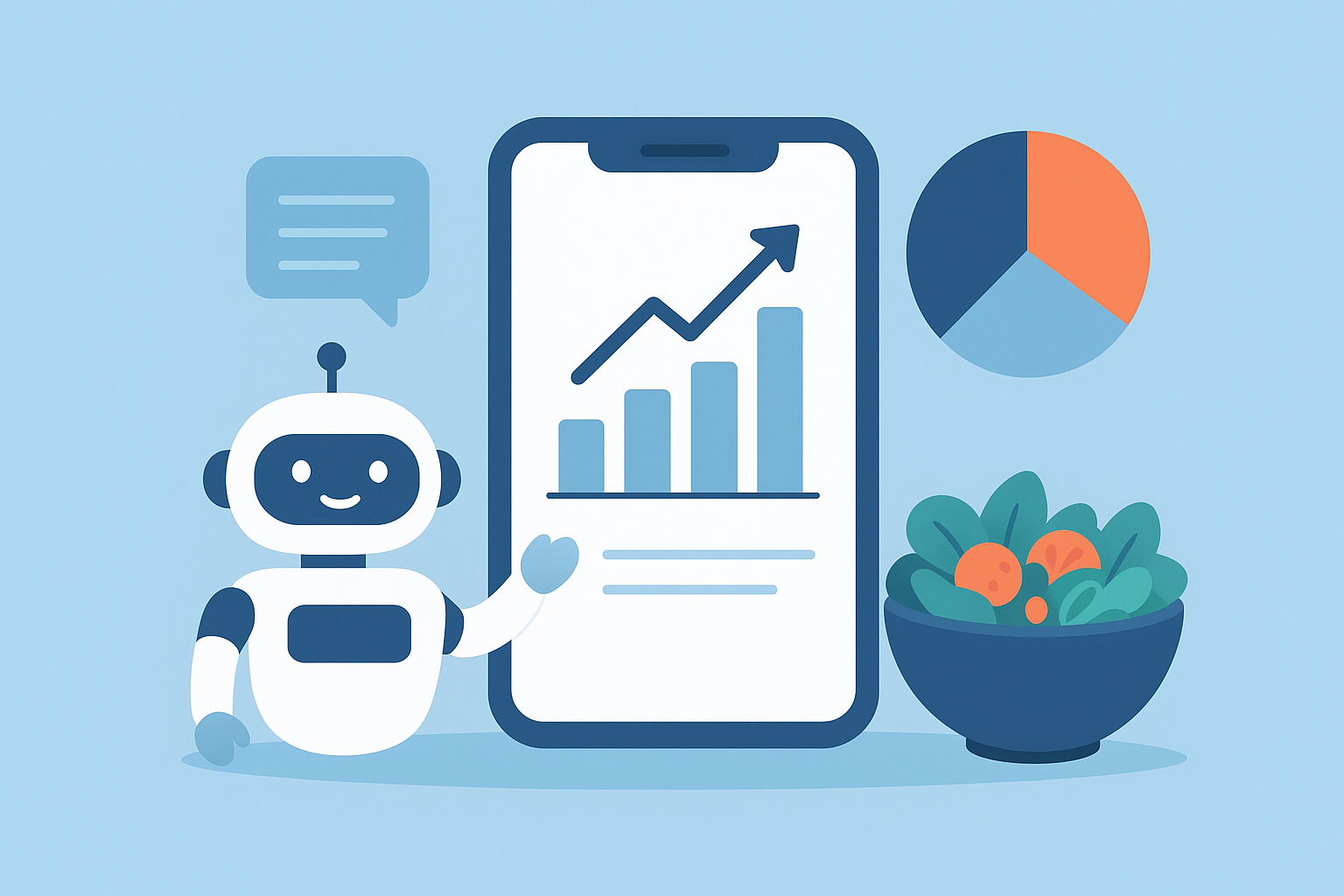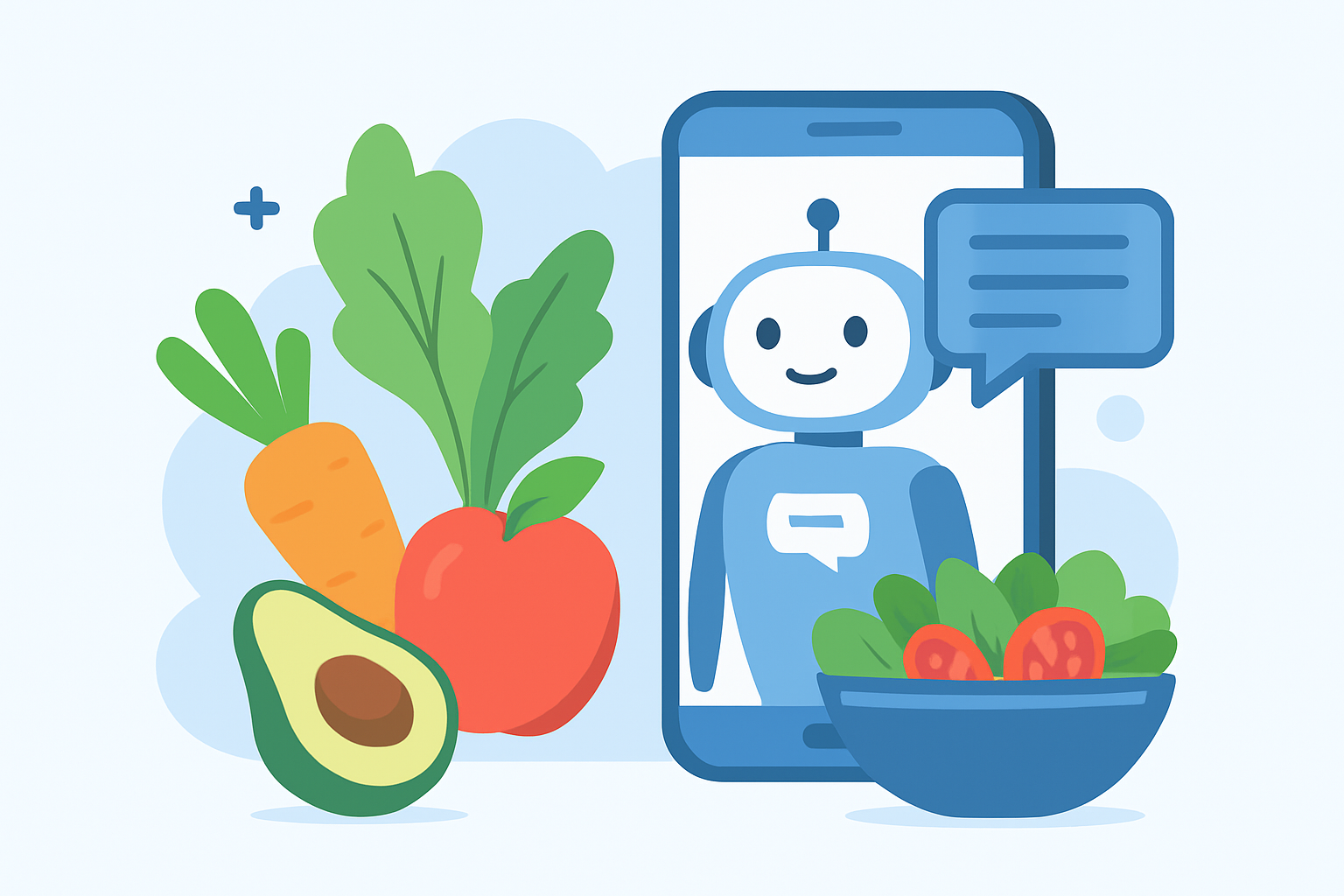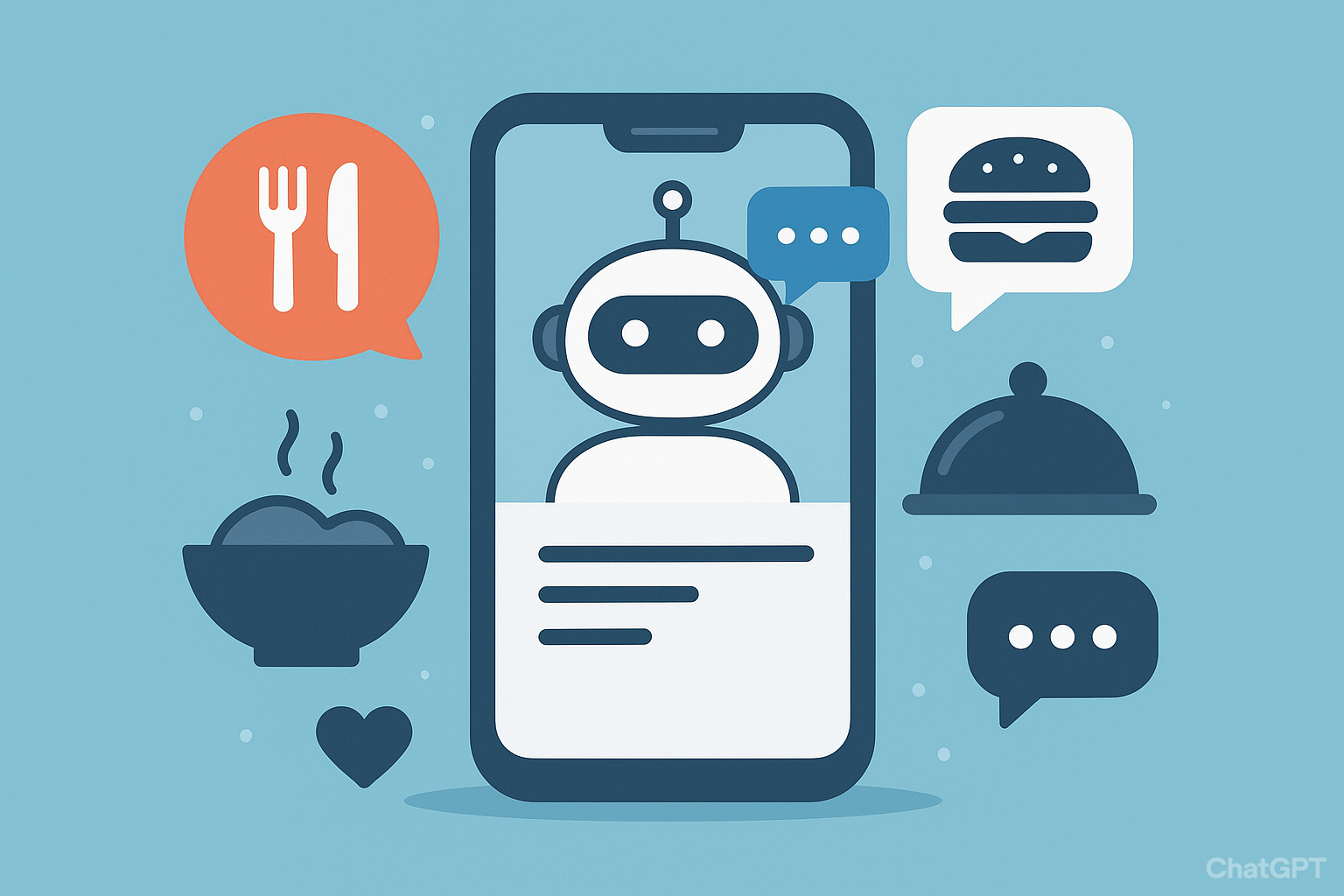In the modern digital landscape, artificial intelligence has become an indispensable force reshaping almost every industry. From healthcare to retail, AI-driven solutions have introduced speed, personalization, and automation that were once unimaginable. The food and restaurant sector is no exception. With the increasing demand for fast, efficient, and personalized dining experiences, businesses are now turning toward food chatbots to enhance engagement, streamline services, and improve customer satisfaction. These AI-powered virtual assistants are revolutionizing how restaurants, cafes, and food delivery companies interact with customers. Whether it’s assisting with menu selections, taking orders, providing nutritional information, or handling feedback — food chatbots are the future of intelligent dining. This transformation marks the dawn of a new era where technology meets taste — and platforms like EngagerBot are leading this exciting revolution.
Introduction: Understanding the Concept of Food Chatbots
A Food Chatbot is an AI-powered conversational assistant designed specifically for the food and hospitality sector. It interacts with customers through websites, social media platforms, and mobile applications, answering queries, taking orders, recommending dishes, and even processing payments. In the fast-paced food industry, where customer experience defines brand loyalty, chatbots provide businesses with a smart way to handle large volumes of customer interactions without compromising on personalization. For instance, a chatbot integrated with a restaurant website can greet visitors, suggest trending dishes, and take orders within seconds.
The growing importance of food chatbots lies in their ability to mimic human-like conversations while maintaining accuracy and speed. They bridge the gap between automation and emotion by delivering friendly, helpful, and personalized responses around the clock. Platforms like EngagerBot empower restaurants, cafes, and delivery chains to integrate these smart assistants effortlessly, ensuring that every customer receives instant attention and assistance. As we step deeper into the digital age, food chatbots are no longer a luxury but a necessity for brands that want to stay ahead in the competitive culinary marketplace.
The Evolution of Chatbots in the Food Industry
The journey of chatbots began with simple rule-based programs that could respond only to specific commands. However, the evolution of AI and natural language processing (NLP) has completely changed the game. Modern food chatbots can now understand complex language, detect intent, and offer relevant responses that make interactions feel natural. Over the past decade, the food industry has rapidly adopted chatbots to reduce dependency on human staff, speed up service, and deliver consistent customer experiences.
The introduction of AI-driven conversational technology marked a turning point. Restaurants that once relied on phone calls and manual order taking began to use chatbots to manage orders automatically, saving time and resources. Moreover, food chatbots now assist not only in ordering but also in offering recommendations based on customer preferences, tracking deliveries, and gathering feedback. As technology continues to advance, the integration of voice recognition and machine learning further refines these systems, making them smarter with every interaction. The evolution of chatbots is a testament to how innovation and customer convenience can coexist in perfect harmony.
How Food Chatbots Transform the Dining Experience
In today’s fast-moving world, customers expect convenience, speed, and personalization. Food chatbots address all these needs by creating seamless digital dining experiences. Instead of waiting in line or navigating through complex menus, customers can simply chat with an AI assistant that guides them from start to finish. Whether it’s booking a table, placing an order, or checking delivery status, the chatbot ensures everything happens smoothly.
The key transformation lies in accessibility. Chatbots can be integrated across multiple platforms — websites, Facebook Messenger, WhatsApp, and even voice assistants. This makes the dining experience omnichannel and interactive. Additionally, these bots can remember customer preferences, dietary restrictions, and favorite meals, which helps in offering personalized recommendations. This personal touch turns occasional customers into loyal ones. Ultimately, food chatbots don’t just simplify transactions — they create enjoyable, engaging, and memorable experiences that strengthen a brand’s identity in the digital food space.
The Technology Behind Food Chatbots
Behind every successful food chatbot lies a combination of advanced technologies such as Artificial Intelligence (AI), Natural Language Processing (NLP), and Machine Learning (ML). These technologies enable chatbots to interpret user input, understand intent, and respond with meaningful information. NLP allows the chatbot to process text or voice messages like a human, while ML ensures the system improves continuously by learning from previous conversations.
Moreover, integrations with restaurant management systems and CRMs help chatbots manage inventory, update menus, and even track delivery logistics in real time. APIs (Application Programming Interfaces) make it possible for chatbots to connect with third-party services like payment gateways, food delivery platforms, and loyalty programs. The real strength of a food chatbot lies in this technological ecosystem that allows businesses to operate efficiently and deliver excellent user experiences. The smarter the underlying technology, the better the chatbot performs — and that’s exactly what modern solutions like EngagerBot aim to achieve.
Personalized Customer Interaction and Engagement
One of the biggest advantages of food chatbots is their ability to provide highly personalized experiences. Every customer is unique — they have different tastes, dietary needs, and habits. By collecting and analyzing customer data, chatbots can tailor responses to each user. For example, a returning customer who previously ordered vegan meals will receive personalized vegan recommendations on their next visit.
This personalization doesn’t just improve the user experience — it builds emotional connections. When customers feel understood and valued, their loyalty increases. Chatbots also encourage engagement through fun interactions like recipe quizzes, daily specials, or loyalty rewards. With this combination of personalization and engagement, restaurants and food services can maintain meaningful relationships with customers while simultaneously boosting sales. In essence, a food chatbot becomes not just a digital assistant, but a virtual host that knows the customer personally.
Streamlining Food Ordering and Delivery
In the era of instant gratification, customers expect their meals to be ordered and delivered with minimal effort. Food chatbots simplify this process by automating the entire ordering journey. From browsing the menu to selecting add-ons and making secure payments, the chatbot handles it all through an easy-to-navigate conversation.
For food delivery businesses, this automation saves significant time and resources. It reduces human errors, shortens order-taking time, and ensures accuracy. Customers appreciate the convenience of being able to place orders through their favorite platforms like WhatsApp or Facebook Messenger without downloading additional apps. Once the order is confirmed, the chatbot can provide real-time tracking updates, keeping customers informed about preparation and delivery times. This level of efficiency not only enhances user satisfaction but also improves operational productivity. It’s no surprise that chatbots are becoming the backbone of modern food ordering systems.
Enhancing Customer Support with 24/7 Assistance
Customer service is a cornerstone of success in the food industry. However, maintaining round-the-clock human support can be expensive and challenging. This is where food chatbots shine. With the ability to operate 24/7, chatbots ensure that no customer query goes unanswered — whether it’s a question about menu items, delivery delays, or refund requests.
Unlike human agents, chatbots never tire or take breaks. They deliver instant, consistent, and polite responses every time. This reliability leads to higher customer satisfaction rates and fewer negative reviews. Moreover, when complex issues arise that require human intervention, chatbots can seamlessly transfer the conversation to a live agent with all the necessary context. This hybrid approach of AI plus human support ensures that customers always receive the best possible service without long wait times.
Boosting Sales Through Smart Recommendations
A well-designed food chatbot does more than just take orders — it actively drives sales. By analyzing customer behavior, chatbots can suggest relevant upsells and cross-sells. For instance, if a customer orders a burger, the chatbot might recommend fries or a beverage to complete the meal.
This smart recommendation system not only increases average order value but also enhances the overall customer experience. Unlike traditional sales tactics, chatbot suggestions feel natural and helpful. They are based on data-driven insights, ensuring that customers see offers that genuinely interest them. Over time, this automated yet personalized sales approach can significantly boost revenue for restaurants and delivery platforms alike.
Food Chatbots and Data-Driven Insights

In the digital food industry, data is power. Every customer interaction, order, and preference contains valuable insights that can shape business decisions. Food chatbots play a crucial role in gathering, analyzing, and utilizing this data effectively. Each conversation generates information about customer habits, frequently ordered items, preferred dining times, and satisfaction levels. This real-time data helps restaurants understand what customers truly want and adapt their strategies accordingly.
For example, if data shows that most customers prefer plant-based meals during certain times of the year, a restaurant can promote vegan specials or introduce new plant-based options. Similarly, chatbots can detect recurring complaints or delivery issues and alert management instantly. This proactive data analysis ensures that businesses can fix problems before they escalate.
Moreover, AI-powered chatbots equipped with machine learning continuously refine their understanding of customer behavior. Over time, they can predict future trends and personalize marketing campaigns with precision. Restaurants that leverage chatbot analytics often see a significant increase in engagement, retention, and profitability. The best part is that all this valuable data is collected automatically — no manual surveys or guesswork needed. In this way, food chatbots become not just service tools but strategic assets that drive smarter, more informed business growth.
Reducing Operational Costs with Automation
Running a restaurant or food delivery business involves a wide range of expenses — from staffing and logistics to marketing and support. By introducing food chatbots, businesses can significantly reduce operational costs without compromising service quality. Chatbots handle thousands of customer inquiries, reservations, and orders simultaneously, eliminating the need for large customer service teams.
The automation of routine processes — such as taking orders, confirming bookings, and providing delivery updates — saves both time and money. Restaurants can reallocate human staff to more critical tasks like food preparation and quality control, while chatbots take care of customer-facing communication. This leads to streamlined operations, faster service, and reduced human error.
Additionally, chatbots integrated with payment gateways can process transactions directly, minimizing manual billing and cashier workload. They can even help in managing stock updates or notifying managers about low inventory levels. As a result, restaurants operate more efficiently with less overhead. In a world where profit margins can be tight, food chatbots offer an intelligent solution for cost optimization and operational excellence.
Multilingual Capabilities and Global Reach
The culinary industry is inherently global — food connects people across languages and cultures. To cater to a diverse customer base, food chatbots are now equipped with multilingual capabilities. They can communicate fluently in multiple languages, allowing businesses to serve international customers or communities with different linguistic preferences.
This multilingual flexibility breaks barriers and enhances accessibility. A customer in Paris can chat in French, while another in Dubai can converse in Arabic — all through the same chatbot interface. This inclusivity not only broadens the restaurant’s market reach but also strengthens customer trust.
Furthermore, for global food chains, multilingual chatbots ensure consistent brand communication across regions. Customers receive the same quality of service and information, regardless of location or language. Platforms like EngagerBot enable seamless integration of multilingual AI models that automatically detect and respond in the user’s preferred language. This level of adaptability creates a personalized and culturally aware experience that resonates deeply with customers. In an increasingly interconnected world, language should never be a limitation — and food chatbots make sure it isn’t.
Chatbots in Food Delivery Platforms
The rise of food delivery platforms has transformed how people experience dining. Whether it’s ordering pizza on a lazy evening or getting breakfast delivered to your doorstep, convenience drives the industry forward. Food chatbots play a major role in enhancing this convenience by integrating directly into delivery apps and websites.
These chatbots simplify the ordering process from start to finish. Customers can browse menus, customize meals, add delivery instructions, and make payments — all through conversation. For example, a user could simply type, “I’d like a pepperoni pizza with extra cheese,” and the chatbot handles the rest. Beyond taking orders, chatbots can also track deliveries, send notifications, and request feedback once the order is completed.
Food delivery chatbots are particularly valuable during high-demand periods like weekends or holidays, when human staff may be overwhelmed. By automating large portions of the order management process, restaurants can maintain speed and accuracy even during peak times. The integration of AI chatbots into delivery platforms not only improves user experience but also reduces errors and boosts customer satisfaction — leading to more repeat orders and stronger brand loyalty.
The Role of Food Chatbots in Restaurant Marketing
Marketing is vital for success in the food business, and food chatbots are now powerful tools for promotional activities. They help restaurants communicate directly with their audience in an interactive, conversational way. Instead of sending generic advertisements, chatbots deliver personalized messages, offers, and promotions based on customer preferences and order history.
Imagine a chatbot reminding a customer about “Taco Tuesday” deals or suggesting a discount for their favorite dish. This approach makes marketing feel more human and relevant. Chatbots can also be programmed to send automated messages during special events, holidays, or new product launches, keeping customers constantly engaged.
Additionally, food chatbots can collect reviews, conduct mini-surveys, and even encourage social media sharing. These interactive marketing efforts help restaurants generate organic buzz and strengthen their digital presence. Compared to traditional marketing channels, chatbots offer higher engagement rates and a more personal touch. In short, they are transforming digital marketing from a one-way broadcast into a two-way, relationship-building conversation.
The Importance of AI-Powered Menu Recommendations
Menus can be overwhelming, especially when customers face dozens of choices. AI-powered food chatbots simplify decision-making by offering personalized menu recommendations. Using data from previous interactions, chatbots can suggest dishes that align with a customer’s taste, dietary needs, and order history.
For example, if someone frequently orders low-calorie meals, the chatbot can highlight new healthy options or trending fitness-friendly dishes. Similarly, it can identify upsell opportunities by recommending combos or add-ons that enhance the order.
This level of personalization not only improves the dining experience but also increases conversion rates. Customers are more likely to complete a purchase when they receive tailored suggestions. Moreover, these AI-driven insights help restaurants identify popular dishes and optimize their menus based on real-time demand trends. Ultimately, AI-based recommendations transform food ordering into a smart, engaging, and satisfying experience that benefits both customers and businesses alike.
Integrating Food Chatbots with Social Media Platforms
Social media has become the heartbeat of digital communication — and for the food industry, it’s where most customers discover new restaurants, explore cuisines, and share their dining experiences. The integration of food chatbots with social media platforms such as Facebook Messenger, Instagram, and WhatsApp has completely revolutionized how restaurants engage with their audience. Instead of redirecting users to external websites or apps, businesses can interact directly through chat — taking orders, answering queries, and promoting special offers instantly.
This social commerce integration creates a seamless user experience. A customer scrolling through Instagram can see a restaurant’s ad, tap “Order Now,” and complete their purchase within the chat itself. Chatbots automate this journey with ease, converting engagement into revenue in just a few clicks. Additionally, they can respond to comments, manage bookings, and handle basic customer service queries right within social platforms — reducing response times and increasing satisfaction.
Another advantage of social media chatbots is real-time communication. They allow restaurants to remain active and responsive even outside business hours. Furthermore, social chatbots can collect valuable insights from interactions, helping brands understand audience demographics, popular menu items, and customer sentiment. By integrating with social media analytics, restaurants can refine their campaigns and build stronger customer relationships.
With this level of integration, the boundary between marketing and customer service disappears. A single chatbot conversation can drive both brand awareness and sales simultaneously. For modern businesses looking to succeed in a crowded digital landscape, food chatbots on social media are not just an option — they’re an essential competitive advantage.
The Role of Food Chatbots in Customer Feedback and Reviews
Feedback is the backbone of improvement in any service-oriented business. For restaurants, knowing what customers think about their food, ambiance, and delivery experience is invaluable. Food chatbots make it easier than ever to gather honest, real-time feedback directly from customers without interrupting their dining experience.
After a meal or order delivery, the chatbot can politely ask for feedback or a quick star rating. Because the process feels conversational and effortless, customers are more likely to respond. This steady flow of feedback allows restaurants to identify strengths, detect recurring issues, and measure overall satisfaction levels. Chatbots can also follow up on negative reviews with apology messages or offers, showing customers that their opinions matter.
What sets chatbots apart from traditional feedback forms is their ability to analyze data immediately. Using sentiment analysis, AI can detect whether feedback is positive, neutral, or negative, allowing management to take swift action. For instance, if multiple customers complain about late deliveries, the system can automatically alert the delivery team. This proactive approach prevents minor issues from becoming major problems.
By integrating feedback systems into daily operations, food chatbots ensure that restaurants never lose touch with customer sentiment. They transform simple feedback into actionable insights — enabling businesses to evolve continuously and maintain excellence in both food quality and service.
Food Chatbots for Health and Nutrition Guidance

As people become more health-conscious, there’s an increasing demand for personalized nutritional information when ordering food. Food chatbots are now being used to bridge the gap between convenience and health awareness. By integrating nutritional databases, these chatbots can provide real-time insights into calorie counts, ingredients, and dietary suitability.
For example, when a customer orders pasta, the chatbot can inform them about its nutritional content, offer gluten-free alternatives, or suggest a low-carb version. Similarly, for users with allergies or dietary restrictions, chatbots ensure safety by alerting them to ingredients that may cause reactions. This personalized assistance empowers customers to make smarter food choices without compromising taste or convenience.
Restaurants benefit too, as this transparency builds trust and attracts health-focused clientele. The inclusion of AI-based nutrition assistants transforms chatbots from mere order-takers into intelligent wellness companions. By helping customers stay informed, food chatbots position restaurants as responsible, customer-centric brands that care about well-being as much as flavor.
Future Trends: The Next Generation of Food Chatbots
The world of food chatbots is evolving rapidly, and the next generation promises even more intelligent, interactive, and immersive experiences. One major trend is the integration of voice assistants, allowing customers to place orders using voice commands through smart devices like Alexa or Google Assistant. This hands-free approach adds convenience and accessibility.
Another growing trend is the use of augmented reality (AR) and virtual reality (VR) in digital dining. Imagine viewing your dish in 3D before ordering or virtually exploring a restaurant’s ambiance. AI-driven chatbots will soon connect these technologies, merging sensory experience with conversation.
Moreover, predictive personalization is set to redefine how chatbots interact. With access to purchase history, weather data, and even local events, future chatbots will anticipate what a customer might crave before they even ask. Blockchain integration for transparent supply chains and payment security is another emerging innovation.
In short, the future of food chatbots is one where AI, automation, and creativity converge — offering experiences that are faster, smarter, and more human-like than ever before. Businesses that adapt early will lead the digital dining revolution, shaping how people interact with food for generations to come.
Why Every Restaurant Needs a Food Chatbot
In today’s competitive market, restaurants can no longer rely solely on traditional marketing or manual order-taking. The digital customer demands efficiency, personalization, and engagement — all of which are delivered seamlessly by food chatbots. These AI-driven assistants not only improve communication but also enhance brand image and streamline operations.
From small local eateries to global food chains, implementing a chatbot means faster service, reduced errors, and happier customers. Chatbots also allow restaurants to scale without proportionally increasing costs. Whether handling online reservations, digital marketing, or customer feedback, a chatbot operates as a full-time team member that never sleeps.
Moreover, food chatbots create memorable interactions that keep customers returning. By offering consistent quality, tailored recommendations, and engaging conversations, they transform casual diners into loyal fans. For restaurants looking to thrive in a digitally driven era, adopting a food chatbot isn’t just an upgrade — it’s a necessity that defines long-term success.
Conclusion: The Digital Future of Dining with EngagerBot
The culinary world is changing, and technology is at the heart of this transformation. Food chatbots are not just tools — they are digital partners that redefine how restaurants serve, communicate, and grow. From automating orders to offering personalized nutrition advice, chatbots have proven their ability to enhance every touchpoint of the customer journey.
Platforms like EngagerBot make this transition effortless by providing intelligent chatbot solutions tailored to the food and hospitality industry. With features that blend automation, personalization, and AI innovation, EngagerBot empowers restaurants to deliver world-class experiences while staying efficient and competitive.
As we look toward the future, the fusion of human creativity and AI precision will continue to shape the dining landscape. The restaurants that embrace this change today will be the ones leading tomorrow. With EngagerBot by your side, your brand isn’t just serving meals — it’s serving smarter, faster, and more delightfully than ever before.

